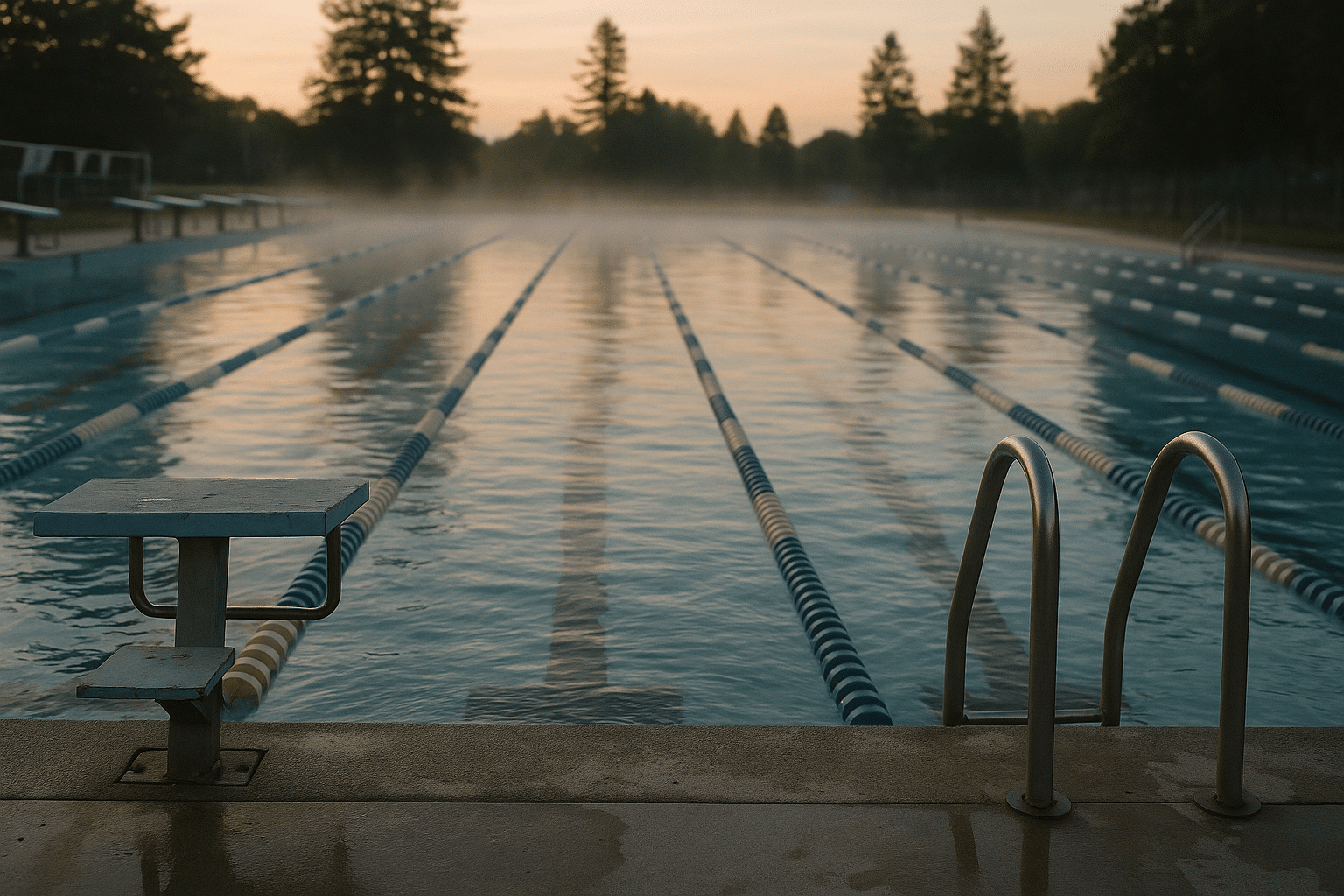
Explore the world of swimming
Introduction: Why Swimming Matters and How This Guide Flows
Slip into water and the world quiets. Muscles lengthen, breath steadies, and the body discovers a supportive element that both resists and embraces. Swimming is more than a pastime; it is a life skill, a low-impact pathway to fitness, and a gateway to community and adventure. It engages nearly the entire body—legs driving from the hips, a strong core stabilizing the midline, and shoulders, back, and chest powering each stroke—while buoyancy reduces joint stress. Immersion up to the neck can reduce weight-bearing on joints by roughly 80–90%, making swimming one of the more joint-friendly forms of exercise available. For many adults, moderate lap swimming expends approximately 300–700 kilocalories per hour depending on pace, body mass, water temperature, and stroke choice. Beyond physiology, there is a safety dimension: global estimates attribute hundreds of thousands of deaths each year to drowning, a burden that disproportionately affects low-resource settings. The ability to float, tread water, and self-rescue changes that risk profile for individuals and families.
Swimming’s relevance extends across ages and goals. Young learners develop water confidence and coordination. Adults seeking stress relief find that rhythmic breathing and the sensory hush of water provide a meditative cadence. Older exercisers and those in rehabilitation appreciate the reduced impact and adjustable intensity. Endurance athletes turn to swimming for aerobic capacity without the pounding associated with land sports. Even during heat waves, a well-managed pool offers a controlled environment where perceived exertion can be balanced against cooling effects, though hydration and gradual warm-ups remain essential.
This article starts with an outline, then dives deep into technique, training, environments, and safety. Consider it a lane-by-lane guide, moving from fundamentals to practical plans you can use immediately. Here is the roadmap:
– Technique and efficiency across the four competitive strokes, plus breathing and body alignment
– Structured training plans for different goals, from first laps to performance
– Environments and equipment: pools, open water, etiquette, and practical gear
– Safety, inclusion, and lifelong learning pathways
– Conclusion with next steps tailored to beginners, fitness swimmers, and multisport athletes
Whether your aim is a calm 20-minute swim before work or a challenging interval set shared with a team, the water can meet you where you are. Let’s chart a course that is realistic, sustainable, and satisfying—stroke by patient stroke.
Technique and Strokes: Efficiency Over Effort
Good swimming looks effortless because it is efficient, not because it is easy. Water is dense—roughly 800 times denser than air—so reducing drag and converting effort into forward motion matters. Start with body alignment. Think of becoming a long vessel: crown of the head forward, eyes down, neck neutral, hips close to the surface, and a steady, compact kick originating from the hips rather than the knees. Exhale gradually into the water to make breathing smoother; then inhale quickly when your mouth clears the surface. Many beginners hold their breath and then gasp, which spikes heart rate and wastes energy.
Freestyle (front crawl) is the most widely used stroke for fitness. Rotate around a stable spine as you reach forward; avoid crossing the midline with your hand, which creates a fishtailing effect. The catch begins with a slight forearm and wrist “set,” pressing water back with a high elbow to engage the larger back muscles. Kicks can be timed as two-beat (one kick per arm stroke, economical for distance) or six-beat (more propulsion for speed). Backstroke mirrors freestyle mechanics on your back; keep a calm head position with water line at mid-cheek, rotate from the hips and shoulders together, and maintain continuous flutter kicks to keep the hips up. Breaststroke is about timing: pull, breath, kick, glide. Drive hips forward on the glide and keep knees behind the hips to protect the joints; external rotation of the lower legs should be comfortable, not forced. Butterfly relies on rhythm and body undulation; think chest press and hip rise with two kicks per arm cycle—one as the hands enter, one during the pull. Short, controlled repetitions with generous rest build quality without excessive fatigue.
How do you know if you are efficient? Many swimmers track strokes per length and the combined “SWOLF” score (time in seconds plus stroke count over a set distance). For relaxed freestyle in a 25-meter pool, numerous adult swimmers record 18–30 hand entries per length; a lower count at the same speed often signals better streamlining and a stronger catch. But do not chase numbers blindly. Focus on feel: do you slide forward quietly or churn water without moving faster?
Common issues and fixes can accelerate progress:
– Dropping elbows during the pull: practice sculling and fingertip drag drills to promote a high-elbow catch.
– Sinking hips: engage the core, press the chest slightly, and reduce head lift during breathing.
– Breath timing problems: exhale continuously into the water and turn to breathe as the body rotates, keeping one goggle in the water to avoid excessive head lift.
– Overkicking from the knees: visualize kicking from the hips with pointed but relaxed ankles, making small, fast movements rather than large, tiring swings.
Small equipment can help technique if used thoughtfully. A snorkel can isolate body position and encourage relaxed breathing; a pull buoy shifts focus to the catch; fins offer feedback on ankle mobility and bodyline. Use these tools sparingly and with intention, as they change body position and load. Quality practice is rhythmic and mindful: one focused cue per length, patience between repeats, and curiosity about how tiny adjustments change your glide.
Training Plans: From First Lap to Performance
A thoughtful plan transforms random lengths into progress. Begin by setting a realistic frequency—two to four sessions per week suits many adults—and by defining your primary goal: general fitness, technical mastery, or speed/endurance development. Use a simple rating of perceived exertion (RPE) from 1 to 10. Most base work sits around RPE 4–6; harder threshold sets feel like RPE 7–8; short sprints touch 9–10 with full recovery.
For those returning to the water, a 30–40 minute session might total 800–1,200 meters with extensive rest and technique focus. A typical structure is warm-up, skill set, main set, and cool-down. An example beginner session: 200 easy swim, 4×50 drill/swim by 25 focusing on body line, 6×50 at RPE 5 with 30–40 seconds rest, 4×25 relaxed kick, and 100 easy. Keep rest generous so stroke quality stays consistent. Over time, progress by adding one repeat to sets or trimming rest by 5 seconds—small changes compound. A weekly plan could be:
– Session A: Technique emphasis (drills, sculling, short builds)
– Session B: Aerobic base (longer, steady repeats like 6×100 at RPE 5)
– Session C: Mixed pace (alternating 50s steady/strong or short sprints of 25s)
Intermediate swimmers aiming for improved endurance might target 1,500–2,500 meters per session, two to four times weekly. Add threshold work to lift sustainable pace: for instance, 3×400 at strong but controlled intensity with 60 seconds rest, or 12×100 holding a consistent time with 15–20 seconds rest. Track average pace per 100 meters across sets to monitor progress. For variety, insert pull or kick sets to build specific strength and maintain ankle flexibility. Consider a gentle progression rule such as increasing total weekly volume by about 5–10% and scheduling an easier week every fourth week to consolidate gains.
Performance-focused swimmers often organize training around specific paces. After establishing a repeatable “steady” pace per 100 meters, design sets like 5×300 at that pace minus 1–2 seconds per 100 with balanced rest, or 20×50 descending 1–5 and repeat. Sprinkle in sprint power: 16×25 fast with full recovery, focusing on explosive starts, high-quality underwater phases in backstroke or butterfly, and precise breakout timing. Land-based mobility and light strength work—particularly for rotator cuff, scapular stabilizers, hips, and core—helps balance the repetitive demands of swimming. Keep shoulders happy by varying strokes and avoiding excessive volume spikes.
Whatever your level, consider these training principles:
– Warm up thoroughly; include mobility and a few short builds to wake the nervous system.
– Maintain impeccable technique under fatigue; when form breaks down, adjust pace or rest.
– Hydrate; even in cool water, sweat loss can be significant over longer sessions.
– Record two or three metrics (session volume, average pace on a key set, strokes per length) to see trends over weeks rather than day-to-day noise.
– Respect recovery; high-quality sleep and easy days stimulate adaptation. Consistency beats heroic single sessions.
Environments and Equipment: Pools, Open Water, and What to Bring
Where you swim shapes how you swim. Pools offer controlled distances, clear markings, and stable conditions ideal for structured sets. Typical pool water for fitness training sits near 26–28°C, a range that balances comfort and performance for most swimmers. Ventilation matters: pre-swim showers and proper facility management help keep irritants lower at the surface, where swimmers breathe. Open water adds variety and a sense of exploration, but it demands situational awareness. Water below about 20°C can feel brisk, and temperatures approaching 15°C and below increase cold-shock risk; gradual acclimatization, shorter initial swims, and appropriate thermal protection improve comfort and safety. Before entering lakes, rivers, or the ocean, scan for currents, wind, debris, water clarity, waterfowl zones, and entry/exit points. Swimming near a marked course or within a designated area enhances visibility and navigation.
Lane sharing works smoothly with a few simple norms that keep everyone moving respectfully:
– Choose a lane that matches your pace; faster swimmers may circle swim while slower pairs might split the lane.
– Start intervals with spacing—5 to 10 seconds between swimmers helps avoid drafting mishaps.
– Tap a foot once if you intend to pass; the swimmer ahead can pause at the wall to let you by.
– Finish repeats at corners to keep the center of the wall open for turns.
Practical equipment does not need to be elaborate. Well-fitting goggles protect eyes and sharpen vision; a secure cap streamlines hair and reduces drag; earplugs and nose clips are personal comfort choices. Training tools can focus skills: fins for ankle mobility and body position, a pull buoy for catch awareness, paddles for strength and feel (used judiciously), and a snorkel for steady breathing while refining alignment. Rinse gear with fresh water after sessions and allow it to dry to extend its life. Defog goggles by pre-rinsing, avoiding finger contact with the lenses, and periodically using defog drops or a mild soapy rinse.
Open-water accessories include a bright tow float for visibility, a temperature-appropriate suit or layered thermal gear, and a simple watch to track time in the water. Check local advisories for water quality and algal blooms; recent rainfall can alter runoff and clarity. If you swim near boats or boards, pick areas with clear separation and consider high-visibility swim caps to be easily seen.
Sustainability and budgeting deserve mention. Durable silicone caps, replaceable-gasket goggles, and repairable mesh bags reduce waste and cost over time. Many community pools offer lap times and lesson options at varied price points; off-peak hours are often quieter and more affordable. Choose the environment and setup that make regular practice feasible—convenience is a powerful ally for consistency.
Conclusion: Your Next Lap
Swimming rewards patience, attention, and steady practice. The water will not be hurried, but it is generous to those who return often. If you are a beginner, start with comfort: learn to float, stand calmly after submerging, and exhale underwater. Add short swims of 25 meters with plenty of rest, focusing on one cue at a time—quiet head, long reach, soft kick. If you already swim for fitness, build a simple three-session rhythm: technique day, aerobic day, and mixed-pace day. Track one reliable benchmark set each week, like 10×100 at a sustainable pace, to watch gradual improvements. For endurance enthusiasts, targeted threshold sets, purposeful sprints, and varied strokes protect shoulders and elevate performance without monotony.
Safety and inclusion run through every lap. Choose venues with lifeguard coverage when possible, and never swim alone in open water. Acclimate carefully to cold or warm conditions, hydrate, and respect rest days. For families, make water familiarity a regular, positive experience: playful kicking, blowing bubbles, and consistent supervision help children build confidence. Adults returning from injury or managing joint concerns can use buoyancy to move with less pain, progressing volumes slowly and using drills that encourage symmetry and control. Adaptive swimming communities provide instruction and equipment solutions that honor different bodies and abilities; seeking them out can turn uncertainty into independence.
Here is a concise plan to get underway:
– Define your aim for the next 8 weeks: comfort, consistency, or a distance milestone.
– Schedule two to four swims on specific days; protect them like any other appointment.
– Keep a log with session volume, one quality note (e.g., “better catch on left”), and how you felt.
– Add one intentional change each week—slightly longer warm-up, a new drill, or a few 25s a touch faster.
– Check in at week four; celebrate progress, however small, and adjust the plan if needed.
The pool offers clarity and structure; open water offers adventure and perspective. Both can be part of a healthy routine that strengthens heart, lungs, and mind. Step in, let the first cool breath lift your chest, and watch the lane line draw a gentle path forward. Your next lap is not about perfection. It is about showing up, listening to the water, and letting consistent effort carry you farther than you thought possible.


